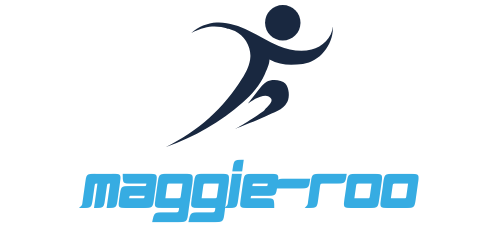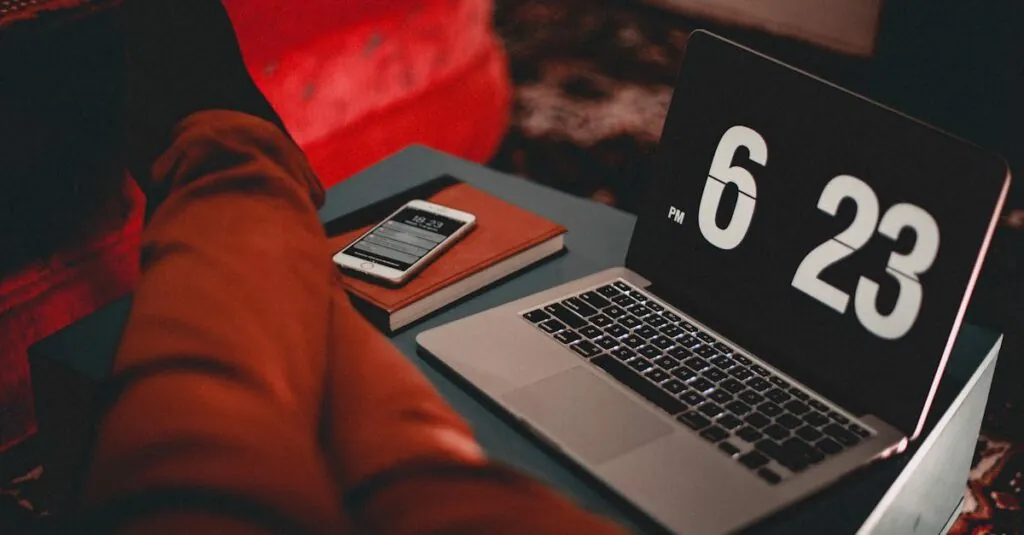Table of Contents
ToggleIn today’s digital age, our iPhones are practically glued to our hands. But let’s face it—sometimes it feels like those hours spent scrolling through cat videos could be better spent. If you’re ready to reclaim your time and maybe even get a life outside of your screen, clearing your Screen Time data is a great first step.
Understanding Screen Time
Screen Time provides insights into how individuals use their iPhones. Tracking time spent on apps and activities, it helps users understand their digital habits.
What Is Screen Time?
Screen Time is a feature on iPhones designed to monitor device usage. It records the amount of time spent on apps, websites, and devices, offering detailed reports. Users can see daily and weekly statistics that highlight trends in app usage. Statistics include time spent on social media, games, and other activities. Information helps in identifying patterns and potential areas for change, promoting aware phone usage.
Benefits of Managing Screen Time
Managing Screen Time encourages healthier device habits. By understanding app usage, individuals can set limits that promote balance between digital and real-life activities. Reduced screen time often leads to improved focus, better sleep, and enhanced productivity. Relationships benefit as users engage more face-to-face, fostering meaningful connections. Prioritizing real-world interactions can significantly enhance emotional well-being. Overall, effective management of Screen Time supports a more mindful and intentional approach to technology.
How to Clear Screen Time on iPhone
Clearing Screen Time data on an iPhone can help users regain control over their digital lives. This process can be straightforward with the right steps.
Step-by-Step Guide
- Open Settings on the iPhone.
- Tap Screen Time to access the feature.
- Scroll down and select Clear Screen Time Data.
- Confirm the action by tapping Clear All Data.
- Restart the device to finalize changes.
Completing these steps effectively removes any previous Screen Time usage data and resets tracking.
Common Issues and Solutions
Users may encounter difficulties while clearing Screen Time data. Forgetting the Screen Time passcode can prevent access; in this case, restoring the device to factory settings serves as a solution. Another common issue involves the automatic resetting of Screen Time settings. If this occurs, ensuring that the iPhone is updated to the latest iOS version usually resolves the problem. Difficulty understanding the options can arise; consulting Apple’s support documentation often clarifies any confusion.
Alternative Methods to Manage Screen Time
Managing Screen Time on an iPhone can extend beyond the built-in settings. Users can explore various alternative methods that enhance digital well-being.
Third-Party Apps
Third-party apps offer unique features for managing screen time. Applications like “Moment” and “Screen Time” provide detailed insights into usage habits. Users can set specific limits on app categories and receive alerts when time exceeds limits. These apps often include additional tools, such as activity tracking and reminders to take breaks. Prioritizing user preference, many of these apps allow personalized settings, fitting individual needs. Each app varies in functionality, ensuring options exist for diverse management styles.
Built-in iOS Features
iOS provides built-in features that enhance screen time management. Focus Mode enables users to configure notifications based on activities, such as work or personal time. Downtime settings block access to specific apps during designated periods. App Limits allow users to restrict daily usage for individual applications, promoting mindful engagement. Users can also enable Content & Privacy Restrictions to further control app accessibility. These features collectively contribute to a well-rounded approach to responsible device use. Utilizing these built-in options fosters a healthier balance between screen and real-world interactions.
Tips for Effective Screen Time Management
Managing Screen Time on an iPhone often requires a strategic approach. First, set specific goals for daily app usage to create a clear target. Utilizing the Screen Time feature enables users to monitor and evaluate their digital habits accurately. Next, consider implementing app limits to reduce usage of distracting applications.
Incorporating Downtime settings helps users focus on important tasks by limiting access to apps during designated hours. Fostering awareness around notifications proves beneficial; silencing non-essential alerts prevents interruptions and encourages dedicated attention.
Additionally, practicing mindful usage encourages users to reflect on their engagement with technology. Opting for activities that enhance real-world interactions, like reading or spending time outdoors, promotes a deeper connection beyond screens.
Utilizing Focus Mode can also significantly enhance productivity. This feature filters notifications based on the user’s current activity, allowing for an uninterrupted work or leisure experience. Exploring third-party apps can provide alternative tracking methods, presenting customized insights into overall screen time usage.
Engaging with family or friends about Screen Time goals can bolster motivation. Sharing experiences may lead to more accountable habits and foster a supportive community around effective screen management. Ultimately, adopting these strategies contributes to a healthier relationship with technology, encouraging balance and well-being.
Clearing Screen Time data on an iPhone is a crucial step towards regaining control over digital habits. By following the outlined steps users can efficiently manage their app usage and foster healthier interactions with technology.
Implementing additional strategies such as setting app limits and utilizing Focus Mode further enhances productivity and well-being. Encouraging open discussions with family and friends about Screen Time goals can create a supportive environment for positive change.
Ultimately taking these actions leads to a more balanced lifestyle where technology serves as a tool for improvement rather than a distraction.








